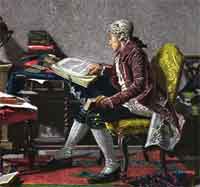Difference Between Figurative and Literal
Figurative vs Literal
Men communicate with each other through the use of language. It is a general concept that means a mental faculty or organ that allows man to learn how to produce and understand words. It is innate and is a unique development of the human brain.
It enables men to communicate and cooperate with each other through a formal system of symbols and signs with meanings. It is governed with rules, and language can either be literal or figurative.
“Literal language” refers to words that do not deviate from their defined meanings. They signify what they mean according to common usage. There is only one, clear meaning of the words expressed without the use of symbols and exaggerations.
Literal language expresses something in a clear and particular way making it very easy to comprehend. Examples are the definitions of words in dictionaries which mean exactly as how they are defined. It does not involve any sequential processes to get the actual meaning of words in literal language.
“Figurative language,” on the other hand, refers to words or group of words that alter the usual meaning and concept of the words. It departs from the literal meanings of words to get a special meaning or effect. It involves exaggerations and results in rhetoric, locution, or figures of speech such as:
Alliteration or the repetition of initial sounds in neighboring words.
Assonance or the resemblance of sounds in words or syllables.
Cliché or very familiar words or phrases.
Hyperbole or a humorous exaggeration.
Idiom or the peculiar language of a group of people.
Metaphor or the comparison between two things using one kind in place of another to suggest their similarity.
Onomatopoeia or the giving of a name to a thing or action through sound imitation.
Personification or giving things and other inanimate objects human qualities.
Simile or comparing two different things usually by using the words “like” and “as.”
It connotes or adds meanings to words. The human mind has a cognitive framework, that is, it is designed to help us remember certain things and words in such a way that when we encounter them, we immediately recognize their meanings but, at the same time, we are also aware of their other meanings too.
Examples:
Figurative: It’s raining cats and dogs.
Literal: It’s raining vey heavily.
Figurative: My best friend passed away recently.
Literal: My best friend died recently.
Summary:
1.Figurative language refers to words or group of words that connote another meaning while literal language refers to words or group of words that denote what they actually mean.
2.Words in figurative language are altered while words in literal language are not.
3.Literal language expresses thoughts and words in a clear and specific manner making it more understandable while figurative language expresses thoughts in a vague manner replacing one word for another.
4.Literal language is what we initially remember when we encounter things or words that we have encountered before while figurative language comes next.
- Difference Between Mocha and Coffee - January 11, 2012
- Difference Between Verb and Predicate - January 2, 2012
- Difference Between Tropical Meteorology and Monsoon Meteorology - January 2, 2012


How to women communicate?
The 1950s called, they want their gender-biased language back.